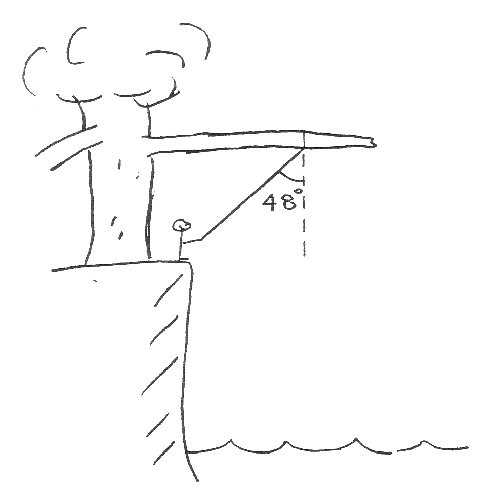Problem 7-51 Energy cons. - Part 6 - D
A boy is playing with a rope tied to a tree near his favourite swimming hole. Initially the boy is stationary and the rope (of length \(3.7 \;m\)) makes an angle of \(48^\circ\) with the vertical. He then lifts his feet slightly and starts to swing freely. If air resistance is neglected, use conservation of energy to determine:
(a) his speed at the bottom of the swing
(b) the minimum height, relative to his initial position, to which he can swing.

Accumulated Solution

At point 2, \(E_P = 0\)
At point 2, \(E_K = (1/2)mv^2\)
\(h = 3.7(1 - \cos48) \;m = 1.22 \;m\)
No. Kinetic energy can never be negative (because of the square) and we have chosen the origin to give \(E_P\) positive.